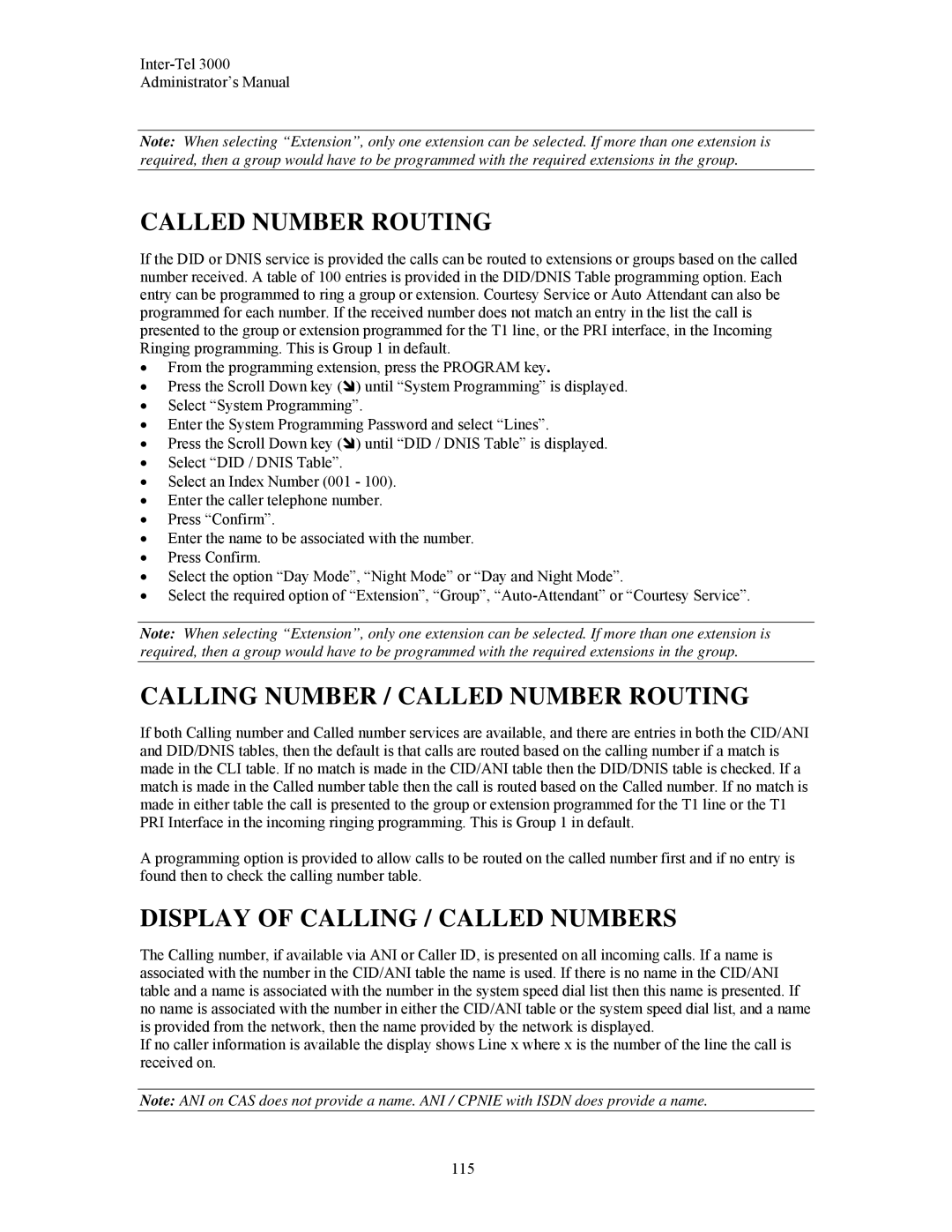
Inter-Tel 3000
Administrator’s Manual
Note: When selecting “Extension”, only one extension can be selected. If more than one extension is required, then a group would have to be programmed with the required extensions in the group.
CALLED NUMBER ROUTING
If the DID or DNIS service is provided the calls can be routed to extensions or groups based on the called number received. A table of 100 entries is provided in the DID/DNIS Table programming option. Each entry can be programmed to ring a group or extension. Courtesy Service or Auto Attendant can also be programmed for each number. If the received number does not match an entry in the list the call is presented to the group or extension programmed for the T1 line, or the PRI interface, in the Incoming Ringing programming. This is Group 1 in default.
•From the programming extension, press the PROGRAM key.
• | Press the Scroll Down key ( | ) until “System Programming” is displayed. |
• | Select “System Programming”. | |
• Enter the System Programming Password and select “Lines”. | ||
• | Press the Scroll Down key ( | ) until “DID / DNIS Table” is displayed. |
•Select “DID / DNIS Table”.
•Select an Index Number (001 - 100).
•Enter the caller telephone number.
•Press “Confirm”.
•Enter the name to be associated with the number.
•Press Confirm.
•Select the option “Day Mode”, “Night Mode” or “Day and Night Mode”.
•Select the required option of “Extension”, “Group”,
Note: When selecting “Extension”, only one extension can be selected. If more than one extension is required, then a group would have to be programmed with the required extensions in the group.
CALLING NUMBER / CALLED NUMBER ROUTING
If both Calling number and Called number services are available, and there are entries in both the CID/ANI and DID/DNIS tables, then the default is that calls are routed based on the calling number if a match is made in the CLI table. If no match is made in the CID/ANI table then the DID/DNIS table is checked. If a match is made in the Called number table then the call is routed based on the Called number. If no match is made in either table the call is presented to the group or extension programmed for the T1 line or the T1 PRI Interface in the incoming ringing programming. This is Group 1 in default.
A programming option is provided to allow calls to be routed on the called number first and if no entry is found then to check the calling number table.
DISPLAY OF CALLING / CALLED NUMBERS
The Calling number, if available via ANI or Caller ID, is presented on all incoming calls. If a name is associated with the number in the CID/ANI table the name is used. If there is no name in the CID/ANI table and a name is associated with the number in the system speed dial list then this name is presented. If no name is associated with the number in either the CID/ANI table or the system speed dial list, and a name is provided from the network, then the name provided by the network is displayed.
If no caller information is available the display shows Line x where x is the number of the line the call is received on.
Note: ANI on CAS does not provide a name. ANI / CPNIE with ISDN does provide a name.
115
